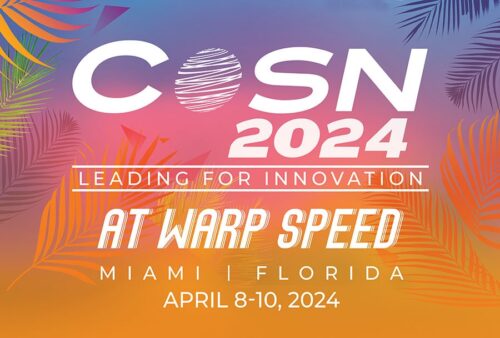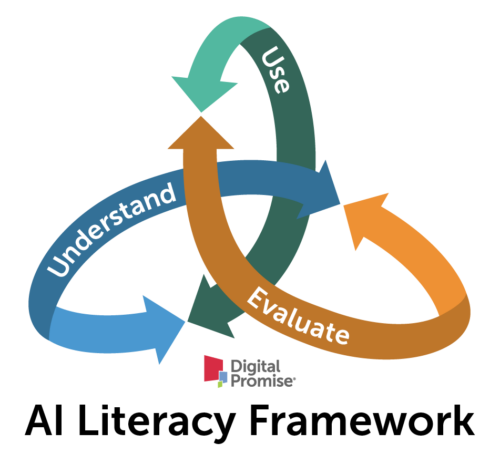
Since then, we have worked with district leaders from the League to learn what they are hearing in their conversations with teachers, students, and community members, and how they are translating that into guidance language as they update their current acceptable use policies to include not just GenAI, but emerging technologies as a whole.

In collaboration with the Consortium for School Networking (CoSN), we look forward to presenting our initial findings at their annual conference in Miami on April 9, 2024.
Although GenAI has been the center of conversations for our work with district leaders, it is not the only technology school leaders are grappling with. As AI and future emerging technologies continue to evolve, district leaders have identified the need to revise AUPs to anticipate future emerging technologies.
One primary issue is the changing nature of these technologies. Through their collective work with district stakeholders, district leaders are currently still exploring changing technologies such as GenAI and defining how to address them, and may not be in the best place to include specific guidance at this time.
They also expressed a need to address issues and advantages that can arise with future technologies, while also specifying actions stakeholders can implement now with current technologies. These considerations have led district leaders to identify broad guidance they can provide to their communities. While there is a sense of urgency to update AUPs, district leaders’ conversations with their colleagues and community members have revealed the need for more time to build knowledge around GenAI, work through the uncertainty of its impact on teaching and learning, and think intentionally about ethical and responsible use.

AI Literacy Framework includes three components: Understand, Use, and Evaluate
Conversations among district leaders and their community members reiterated the importance of resources to contextualize how to approach AI and other emerging technologies in educational environments. Digital Promise is building an AI Literacy Framework to help districts understand how to best use, understand, and evaluate GenAI tools for their teachers, students, and community members. Based on this framework, the EdSafe AI Alliance SAFE Benchmarks, and our conversations with districts, we have determined five key topics that AUP language should focus on:
District leaders have shared the need for a balance between being thorough and simple. When addressing these topics, districts should use language that different community members in their district ecosystem can easily understand.
There is no “ideal model” for integrating GenAI into AUPs effectively. There is still much to learn about GenAI as a whole, including who is using it and how, and what that looks like in schools. District leaders have to consider the contexts and their student and community populations, then adjust their processes and policies based on their unique districts. Community groups within the district ecosystem are learning from each other. Simultaneously, district leaders are also figuring out what existing processes and policies mean in their district, and the implications that incorporating GenAI could have.
Teachers, students, and community members within districts have different perspectives and ideas about how GenAI should be used in education. While hesitation about the use and integration of GenAI is shared among different members of a community, their reasoning may vary. For example, teachers are hesitant to integrate GenAI for a number of reasons, including the impact of AI on the learning process, overall cost, and potentially, a lack of AI literacy and technical expertise. In their conversations with district leaders, students showed a mixed understanding of how generative AI works and uncertainty about how to use it productively. Community members shared how their workforces are using generative AI, but had concerns about how rapidly changing technology will affect both their own as well as students’ daily lives.
Stay tuned as we continue to hear from school districts about how they’re implementing GenAI and other emerging technologies into their AUPs. We will use these findings to develop sample language that other districts can reference as they update their AUPs to include GenAI and other emerging technologies.
Are you an educator and want to share how you and your school district have been using Artificial Intelligence in the classroom? Share your experiences with us!
Sign up for our newsletter to stay updated on Generative AI and district policy.
This project is supported by the National Science Foundation under grant 2334525. Any opinions, findings, and conclusions or recommendations expressed in this material are those of the author(s) and do not necessarily reflect the views of the National Science Foundation.

We want to hear from you!
Please take this 5-minute survey and help us serve you better.
